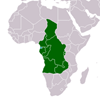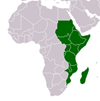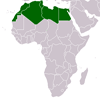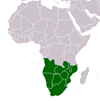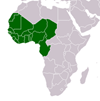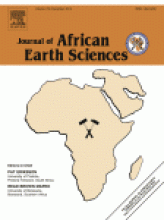The Grenvillian Namaqua-Natal fold belt adjacent to the Kaapvaal Craton: 1. Distribution of Mesoproterozoic collisional terranes deduced from results of regional surveys and selected profiles in the western and southern parts of the fold belt
The Grenvillian Namaqua-Natal fold belt adjacent to the Kaapvaal Craton: 1. Distribution of Mesoproterozoic collisional terranes deduced from results of regional surveys and selected profiles in the western and southern parts of the fold belt
Summary map of major tectonic terranes in the Namaqua-Natal Metamorphic Complex. Correlation between regional geophysical maps and the terranes. Illustrated geological and geophysical relations along nine profiles, with interpretations. Context of terrane distribution with respect to contiguous parts of Gondwana. Regional vergence inversion axis separates northeasterly-verging terranes from southwesterly. Sixteen tectonic terranes of the Namaqua-Natal metamorphic complex are distinguished (the Aggeneys, Agulhas, Bladgrond, Gamka, Grootdrink, Grünau, Fraserburg, Upington, Margate, Mossel, Mzumbe, Okiep, Olifantshoek, Steinkopf, Pofadder, and Tugela terranes). Evidence obtained from field investigations in the outcrop regions of Namaqualand and Natal are correlated with the geophysical data, enabling recognition of terrane suboutcrops in the regions covered by Phanerozoic deposits in the south. This is illustrated by nine selected profiles over the western and southern parts of the metamorphic complex. Four terranes that have not been observed in outcrop are postulated (Agulhas, Fraserburg, Gamka and Mossel terranes) and may represent extensions of some of the Natal terranes (Mzumbe and Margate terranes). The depth to Moho is generally about 40km, diminishing dramatically at the present continental edge to as little as 15km. Listric thrust ramps may originate on rises of the gently undulating topography of the Moho zone. Zones of thrusting and later shearing often exploit older structures and fabrics. The terranes that participated in the Grenvillian Namaqua-Natal Orogeny exhibit a dichotomy of vergences regionally. Those that moved to the northeast and north accreted onto the Archaean Kaapvaal Craton before becoming part of the Kalahari Craton. Terranes with vergences to the south and southwest were amalgamated onto other Archaean cratons. All of the composite cratons took part in the assembly of Rodinia.
CITATION: Colliston, W.P.. The Grenvillian Namaqua-Natal fold belt adjacent to the Kaapvaal Craton: 1. Distribution of Mesoproterozoic collisional terranes deduced from results of regional surveys and selected profiles in the western and southern parts of the fold belt . : Elsevier , 2014. Journal of African Earth Sciences, Vol 100, December 2014, pp. 7-19 - Available at: https://library.au.int/frgrenvillian-namaqua-natal-fold-belt-adjacent-kaapvaal-craton-1-distribution-mesoproterozoic

